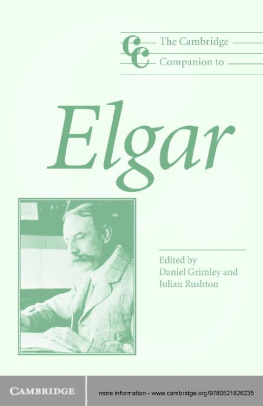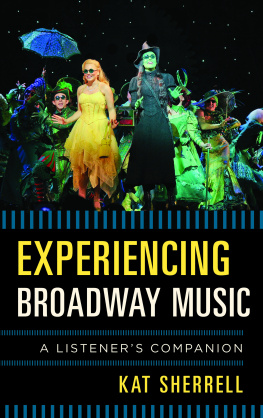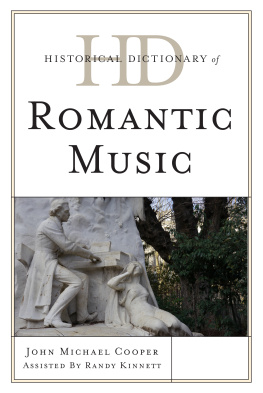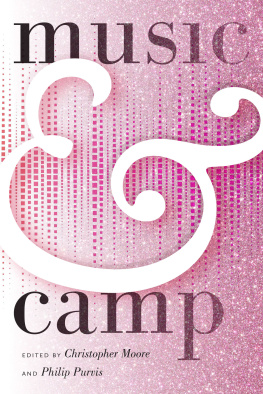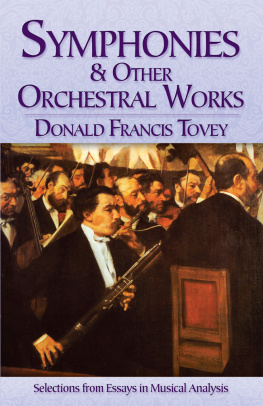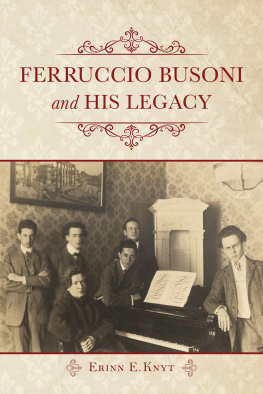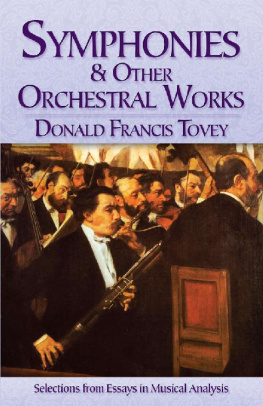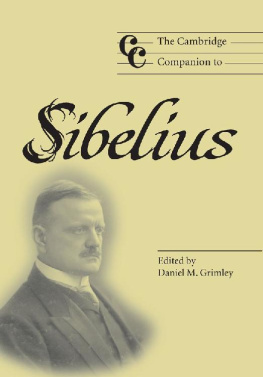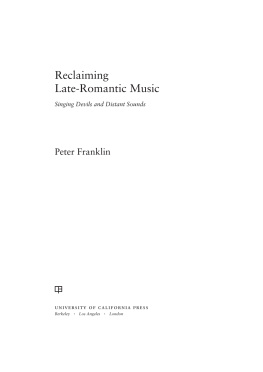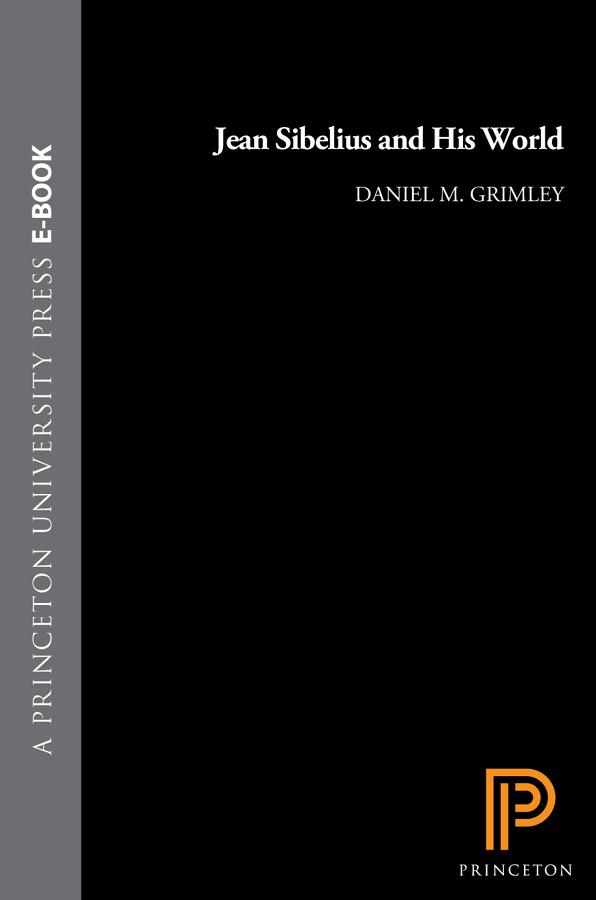JEAN SIBELIUS AND HIS WORLD
JEAN SIBELIUS
AND HIS WORLD
EDITED BY
DANIEL M. GRIMLEY
PRINCETON UNIVERSITY PRESS
PRINCETON AND OXFORD
Copyright 2011 by Princeton University Press
Published by Princeton University Press, 41 William Street,
Princeton, New Jersey 08540
In the United Kingdom: Princeton University Press,
6 Oxford Street, Woodstock, Oxfordshire OX20 1TW
press.princeton.edu
All Rights Reserved
For permissions information, see page xiii
Library of Congress Control Number: 2011926904
ISBN: 978-0-691-15280-6 (cloth)
ISBN: 978-0-691-15281-3 (paperback)
British Library Cataloging-in-Publication Data is available
This publication has been produced by the Bard College Publications Office:
Ginger Shore, Director
Anita van de Ven, Cover design
Natalie Kelly, Design
Text edited by Paul De Angelis and Erin Clermont
Music typeset by Don Giller
This publication has been underwritten in part by grants from
Furthermore: a program of the J. M. Kaplan Fund and
Helen and Roger Alcaly.
Printed on acid-free paper.
Printed in the United States of America
1 3 5 7 9 10 8 6 4 2
Contents
PART I
ESSAYS
PHILIP ROSS BULLOCK
TIMO VIRTANEN
JEFFREY KALLBERG
TOMI MKEL
BYRON ADAMS
GLENDA DAWN GOSS
MAX PADDISON
DANIEL M. GRIMLEY
SARAH MENIN
LEON BOTSTEIN
PART II
DOCUMENTS
TRANSLATED BY ANNIKA LINDSKOG
INTRODUCED BY DANIEL M. GRIMLEY
JEAN SIBELIUS
TRANSLATED FROM THE SWEDISH BY MARGARETA MARTIN
INTRODUCED BY DANIEL M. GRIMLEY
TRANSLATED BY MARGARETA MARTIN
INTRODUCED BY DANIEL M. GRIMLEY
TRANSLATED BY SUSAN H. GILLESPIE
INTRODUCED BY DANIEL M. GRIMLEY
INTRODUCED AND TRANSLATED BY DANIEL M. GRIMLEY
Acknowledgments and Permissions
My first thanks are due to Leon Botstein, not only for his outstanding contribution to the current volume, but also for his leadership of the Bard Music Festival and for his creative vision, which continues to inspire audiences and scholars alike. I am indebted to the other contributors in this book, including the translators, for their stimulating engagement with Sibeliuss life and work, and for responding to my editorial demands with unfailing patience, insight, and good humor. A very special debt of thanks is owed to Irene Zedlacher, Christopher H. Gibbs, and Paul De Angelis, who have held this project together throughout and who offered life support at critical moments of editorial crisis. It has been a privilege to work with the team assembled by the Bard Publications Office: copy editor Erin Clermont, Natalie Kelly, Ginger Shore, and Don Giller and Jack Parton, who offered expert assistance with the music examples. Any remaining errors or oversights are entirely my responsibility.
The Sibelius scholarly community is a remarkably supportive and generous one, and I am especially grateful to the following for their help and advice at various stages of the project: Glenda Dawn Goss, Gitta Henning, Tomi Mkel, and Timo Virtanen. I would also like to express thanks to the staff of the National Archives of Finland and the National Library of Finland (formerly Helsinki University Library), for their assistance with source materials and other related research questions; to the Central Art Archives at the Finnish National Gallery, Helsinki, for the images of paintings by Eero Jrnefelt, Axel Gallen-Kallela, and Ilya Repin reproduced in Philip Ross Bullocks essay; to Lilo Skaarup at the Royal Theatre Archive in Copenhagen and Karsten Bundgaard, and Thomas Trane Petersen at the Danish Royal Library for the Kai Nielsen images reproduced in my own essay on the Tempest music; and to the Sibelius family for their gracious permission to print the previously unpublished material in my essay.
For most of the illustrations reproduced in Sarah Menins essay I wish to acknowledge: the National Board of Antiquities, Finland, for the two photographs of the Paris Pavilion; the Museum of Finnish Architecture, Helsinki, for the interior view of the Viipuri Library; and the Alvar Aalto Museum, Jyvskyl, Finland, for the Aalto sketch of the New York Worlds Fair Finnish Pavilion.
For many of the photographs reproduced in Leon Botsteins essay I wish to acknowledge: photographer Anton Brandl and the Richard Strauss Institute, Garmisch, Germany, for the interior view of Strausss villa; the Museum of Finnish Architecture, Helsinki, for the two photographs of the staircase in the Pohjola Insurance Company Building, the Saarinen design for the 1908 Parliament House competition, and Saarinens 1921 rendering of Kalevala House; and S. C. Johnson Company, for the photograph of Johnson Wax Headquarters.
Daniel M. Grimley
The following parties have also graciously granted permission to reprint or reproduce the following copyrighted material:
For permission to republish the musical examples from Symphony no. 1 (Example 1 on p. ): by Breitkopf & Hrtel, Wiesbaden.
For permission to republish the musical examples from Symphony no. 3 (Example 1 on p. ): 1909 by Robert Lienau Musikverlag. Frankfurt am Main (Germany). Reprinted by permission.
For permission to reproduce the facsimiles of sketches for Cassazione by Jean Sibelius (Figures ): 1994 Fazer Music, Helsinki. Fennica Gehrman Oy, Helsinki. Published by permission.
For permission to republish four musical examples from Sibeliuss Tempest music (Example 1 on pp. ): 1924 Edition Wilhelm Hansen AS, Copenhagen. International copyright secured. All rights reserved. Used by persmission.
For permission to reproduce these photographsFigure 4 on p. (traffic entrance to the Marin County Civic Center Administration Building, San Rafael, California, 1963): Ezra Stoller/Esto.
For permission to reproduce the photograph, Figure 4 on p. , ceiling of the concert hall in Kleinhans Music Hall, Buffalo, New York: Enid Bloch.
For permission to reproduce the photograph, Figure 8 on p. , ceiling detail in Unity Temple, Oak Park, Illinois: Neil Levine.
For permission to publish the translation of the Erik KruskopfSimon Parmet exchange on pp. : Erik Kruskopf & Hufvudstadsbladet in Helsinki.
For permission to publish the translations of Theodor W. Adornos Gloss and Footnote about Sibelius, found on pp. : Suhrkamp Verlag, Frankfurt am Main, Germany.
For permission to reproduce the photograph, Figure 1 on p. , the Sibelius Monument by Eila Hiltunen: Photographer Allan Baxter/ Getty Images.
Sibelius, Finland, and the Idea of Landscape
The music of Jean Sibelius seems richly evocative of a particular sense of time and place. Recently re-released footage of the composer directed by pioneering Finnish documentary filmmakers Heikki Aho and Bjrn Soldan offers a series of iconic images of the composer. The poignant final sequence returns to a profile shot of Sibeliuss daughter, Margareta, playing the violin, with the nostalgic closing pages of the Romance in F, op. 78/2: music, nature, and the domestic family home all seem organically intertwined.
Such images of Sibelius as the symbolic father and progenitor of Finnish music maintain a strong hold in the popular imagination. In 1945, at the end of Finlands ordeal during the Second World War, they must have carried a particularly urgent significance.and the north itself, a poor reflection of the actual cultural contexts in which Sibeliuss work was created and first heard.
A similarly reductive tendency can often be identified in biographical accounts of his music: Sibeliuss creative career has frequently been read as a single narrative curve, the young late Romantic firebrand emerging from his modest lower-bourgeois upbringing in provincial Hmeenlinna 60 miles north of the capital, to lead his nations cultural (and eventually political) emancipation, then swiftly turning aside from the vanguard of this dynamic folk nationalism toward an austere, linear classicism more appropriate for the modern age. It is a trajectory that apparently leads inexorably to the obsessive motivic unity of his final large-scale work, the tone poem


